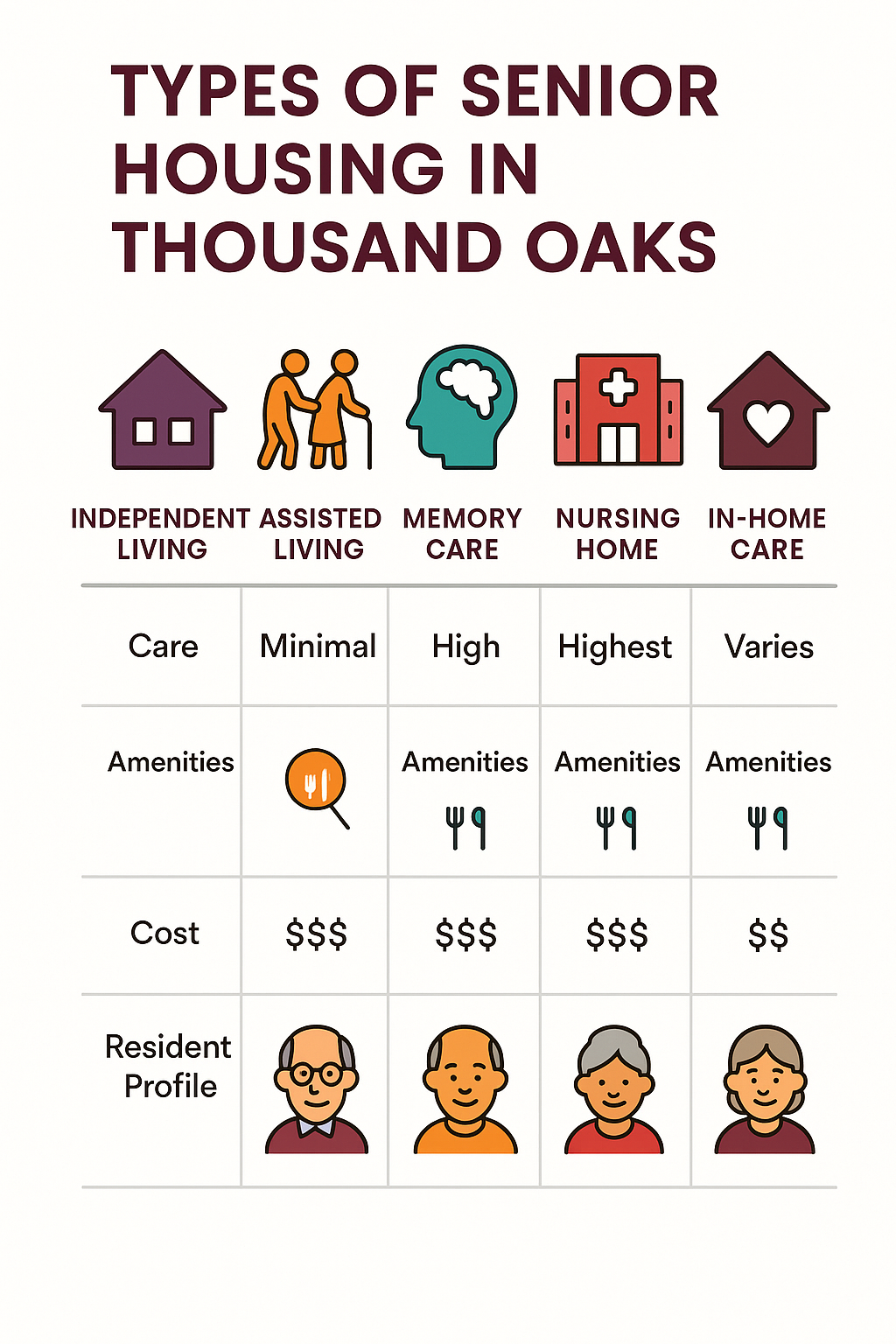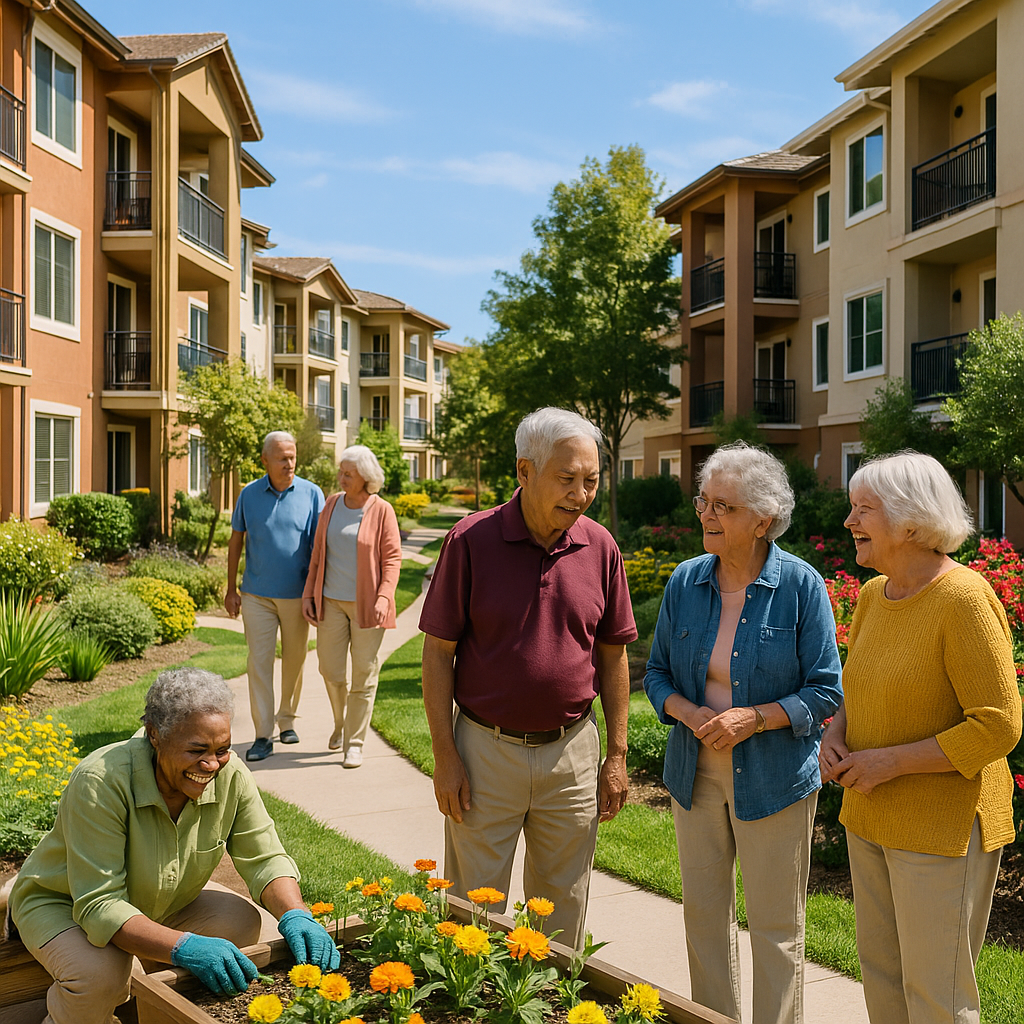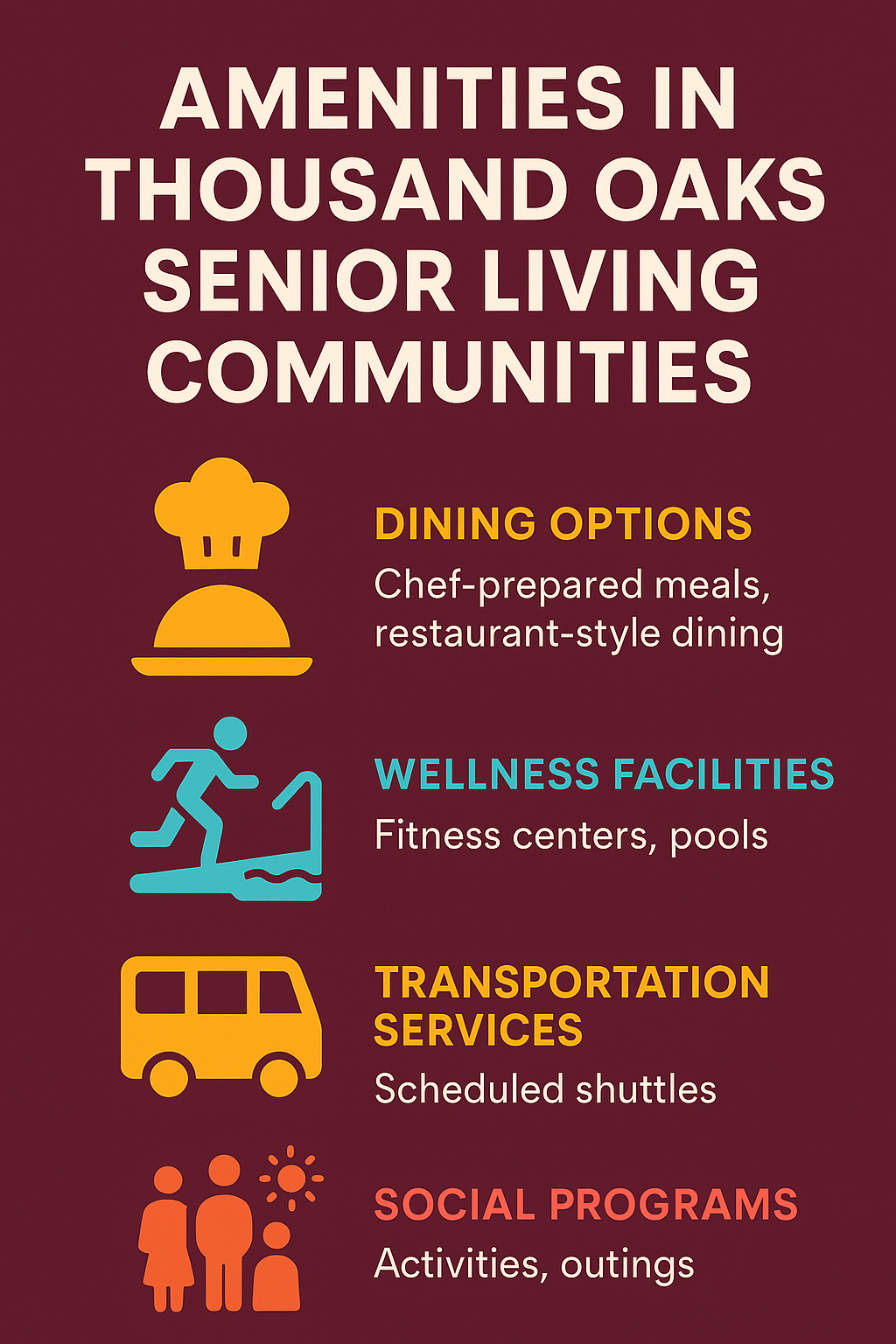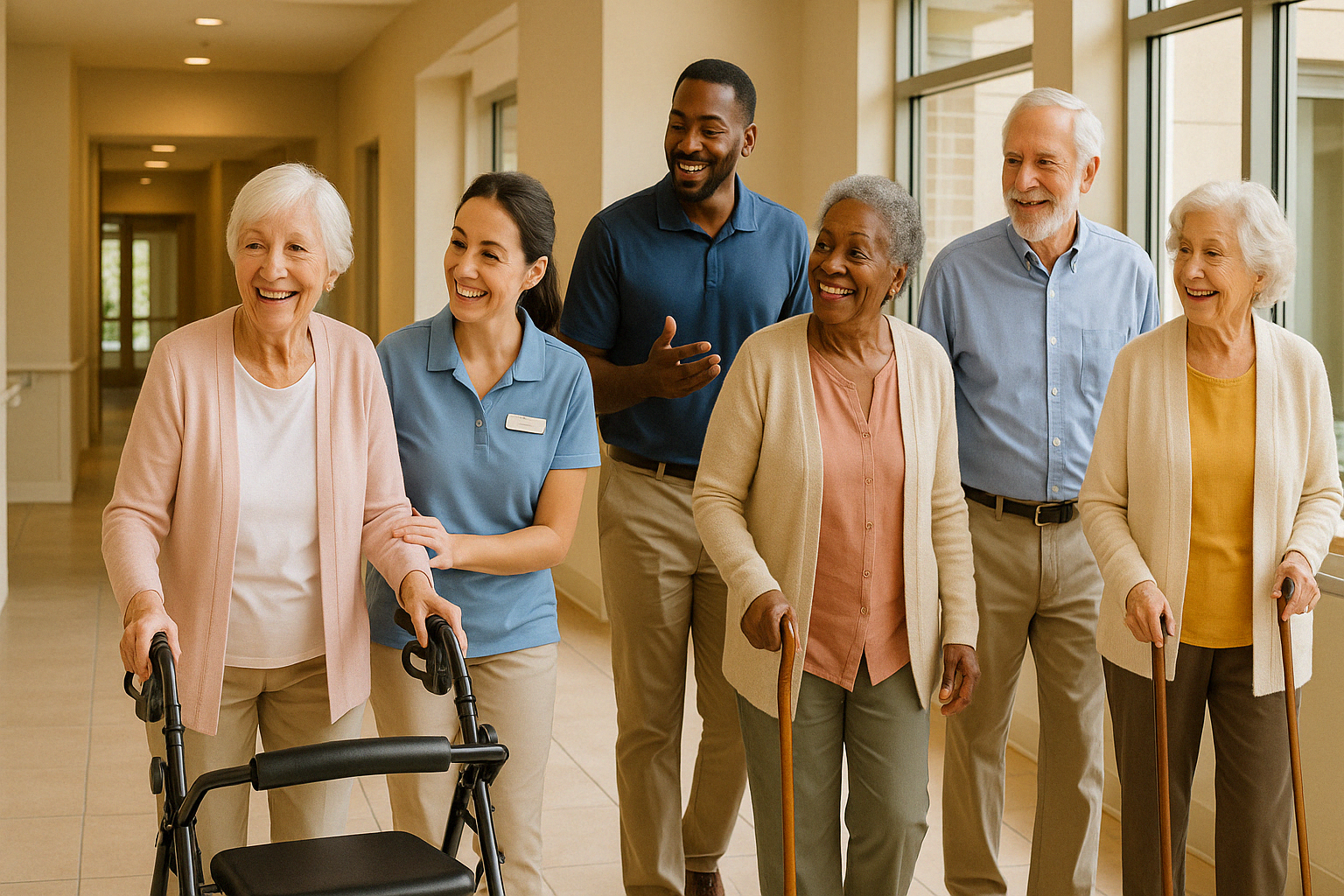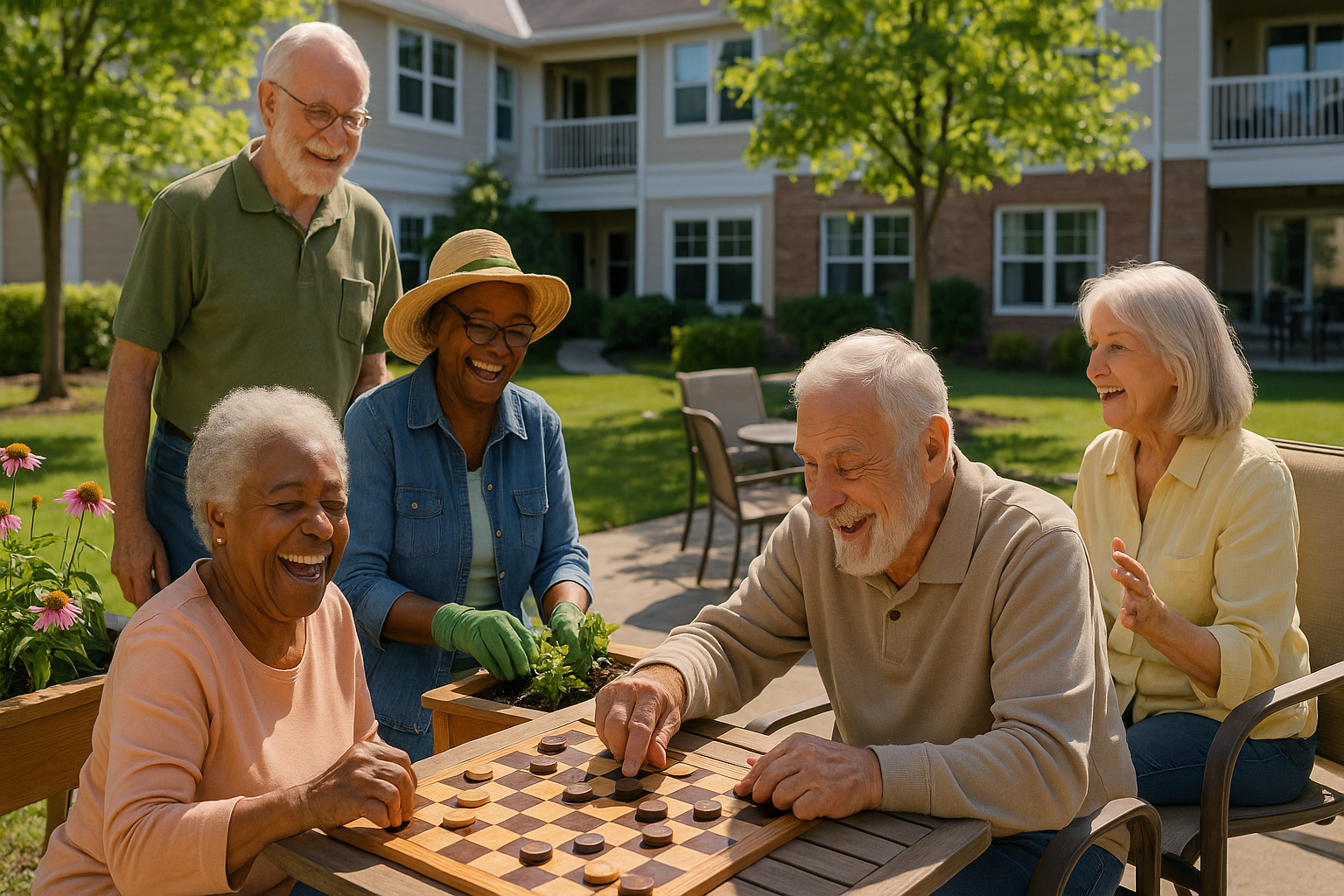From Struggle to Strength: Assisting Homeless Female Veterans
Fighting an Invisible Battle: Help for Homeless Female Veterans
When you’ve served your country only to find yourself without a place to call home, it can feel like fighting another battle – this time invisible to many around you. If you’re a woman veteran facing housing insecurity, or you know someone who is, please know that help for homeless female veterans is available right now.
Reaching out for help isn’t always easy, but these resources are specifically designed for women who’ve served:
| Resource | Contact | Services |
|---|---|---|
| National Call Center for Homeless Veterans | 877-4AID-VET (877-424-3838) | 24/7 emergency support, housing referrals |
| VA Homeless Programs | Visit local VA Medical Center | Housing, healthcare, employment assistance |
| Supportive Services for Veteran Families (SSVF) | VA.gov/homeless | Eviction prevention, rapid rehousing |
| HUD-VASH Program | Contact local VA homeless coordinator | Long-term housing vouchers with case management |
| Women Veterans Health Program | 855-829-6636 | Gender-specific healthcare and MST support |
The journey from military service to civilian life comes with its own set of challenges. For women veterans, these challenges often include navigating single parenthood, healing from military sexual trauma, managing PTSD symptoms, and overcoming employment barriers – any of which can threaten housing stability.
What’s particularly concerning is that while overall veteran homelessness has declined in recent years, homelessness among women veterans has increased significantly from 2020 to 2025. Women who’ve served are now four times more likely to experience homelessness than women who haven’t served. Behind these statistics are real people with real stories.
Navy veteran Jennifer Badger’s words cut straight to the heart: “I lost everything. I lost all three of my children. I lost everything but my life.” Her experience reflects the devastating cascade that can follow housing loss.
Perhaps most troubling is how this crisis remains largely hidden. Many women don’t identify themselves as veterans when seeking services, sometimes because they don’t think they “count” as real veterans or don’t realize they qualify for veteran-specific help. This means they miss out on benefits they’ve rightfully earned through their service.
There is hope, though. A strong network of support exists specifically for women veterans. From emergency shelters that welcome children to comprehensive housing programs with supportive services, the path from crisis to stability is possible with the right connections.

Why This Guide Matters
The growing number of women veterans experiencing homelessness represents a crisis that demands our attention. In 2025, VHA programs are serving thousands of homeless women veterans – and many others remain unidentified and unreached.
Women who’ve served face a unique combination of challenges that their male counterparts and civilian women typically don’t. Military service-related trauma, difficult transitions to civilian life, and gender-specific barriers can create the perfect storm leading to housing instability.
At LifeSTEPS, we believe in the power of prevention. Connecting women veterans with resources before they lose their housing is always the most effective approach. For those already experiencing homelessness, quick intervention with appropriate support can prevent the devastating spiral into chronic homelessness.
Here in Sacramento and throughout California, we’ve seen how the right mix of housing assistance and supportive services transforms lives. A safe place to live combined with trauma-informed care, employment support, and community connection creates the foundation women veterans need to rebuild.
This guide aims to put practical, actionable information into the hands of women veterans, their families, and those who serve them. Because no woman who served our country should ever have to wonder where she’ll sleep tonight.
Understanding the Crisis: Root Causes & Risks
When a woman veteran loses her home, it’s rarely due to a single event. Instead, it’s often the result of multiple challenges colliding—challenges that are uniquely shaped by both military service and gender.
Military Sexual Trauma (MST) casts a long shadow over many women veterans’ lives. The numbers are sobering: women with MST history face a 400% higher risk of becoming homeless compared to those without such trauma. It’s not just the trauma itself, but its ripple effects—trust issues that make maintaining relationships difficult, hypervigilance that disrupts sleep and daily functioning, and emotional barriers that complicate everything from job interviews to apartment applications.
“My marriage is something I was not prepared for,” shared Penni Lo’Vette Brown, an Army veteran who found herself homeless with three children after service. Her words highlight how military service can strain relationships, often leading to divorce—another significant risk factor for housing instability.
Post-Traumatic Stress Disorder affects women veterans whether from combat exposure, MST, or other service-related experiences. PTSD symptoms don’t just cause emotional pain—they create practical barriers to maintaining stable housing. Concentration difficulties can make holding down a job challenging. Anxiety can make navigating benefit systems overwhelming. Flashbacks and sleep disturbances can interfere with daily responsibilities. And for some, substance use becomes a way to manage symptoms, creating additional complications.

Single parenthood presents another major hurdle. Many women veterans are raising children alone, searching for housing that must accommodate families—often on a single income. The math simply doesn’t work in many housing markets. Add in the challenge of finding affordable childcare that aligns with work schedules, and the path to stability becomes even steeper.
Poverty touches about 10% of all women veterans—lower than the 15% rate for non-veteran women, but still significant. When combined with veteran-specific challenges, even “moderate” financial strain can quickly escalate to housing crisis.
Racial disparities cannot be overlooked. Black veterans make up 12% of the veteran population but account for 33% of homeless veterans. American Indian and Alaska Native women veterans experience housing instability at rates three times higher than white male veterans—6.3% compared to 2.1%. These statistics reflect how racial discrimination compounds veteran-specific challenges.
Safety concerns often prevent women from accessing existing veteran housing programs. Many facilities have safety shortcomings, and some women report being placed in facilities alongside registered sex offenders. For women veterans—especially those with children—these safety gaps make seeking help for homeless female veterans through traditional channels feel too risky.
As Joy Ilem, DAV National Legislative Director, pointedly observed: “With greater numbers of women serving in the military and the greater likelihood of women veterans being single parents, new and more comprehensive housing and child care services are needed.”
You can learn more about the research on military sexual trauma through the VA’s National Center for PTSD, which offers extensive resources for both veterans and providers.
Key Statistics & Trends
The numbers tell a story that demands our attention:
In 2025, thousands of homeless women veterans are receiving services through VHA homeless programs. The Supportive Services for Veteran Families (SSVF) program continues to help tens of thousands of veterans, with women making up a significant portion of those served. Similarly, the HUD-VASH program assists thousands of veterans, with women accounting for an important percentage of those receiving help.
Perhaps most troubling is the trend: while overall veteran homelessness has seen some decreases in recent years, homelessness among women veterans has increased significantly through 2025. Even more concerning, the number of unsheltered women veterans continues to rise at an alarming rate.
Women who have served our country face homelessness at four times the rate of their civilian counterparts. This stark disparity highlights the urgent need for gender-specific approaches to veteran homelessness.

High-Risk Demographics
Not all women veterans face equal risk. Certain groups stand at particularly vulnerable intersections:
Women Veterans Under 40 face unique challenges. Research shows they have more than double the odds of experiencing suicidal ideation and over 12 times the odds of attempting suicide compared to older women veterans experiencing housing instability. This younger group often juggles recent transition from military service, young children, and limited civilian work experience—a challenging combination.
Black and American Indian/Alaska Native Women Veterans experience housing instability at disproportionate rates. American Indian/Alaska Native women veterans have the highest rates at 6.3%, followed closely by Black women veterans. These women steer both racial discrimination in housing and employment markets and veteran-specific challenges—a double burden that significantly increases homelessness risk.
LGBTQ+ Veterans often face additional layers of discrimination. While comprehensive data remains limited, LGBTQ+ veterans who served before the repeal of “Don’t Ask, Don’t Tell” may have received less-than-honorable discharges, limiting their access to critical VA benefits including housing assistance.
Justice-Involved Women Veterans encounter significant barriers to stable housing. In 2025, the Veterans Justice Outreach program continues to serve thousands of justice-involved Veterans, with women making up an important percentage. Criminal records create substantial obstacles to both housing and employment, making recovery from homelessness particularly challenging.
At LifeSTEPS, we recognize that understanding these high-risk groups helps us create more effective, targeted approaches. By acknowledging the unique challenges faced by different women veterans, we can design programs that address their specific needs and barriers to stable housing.
Help for Homeless Female Veterans: A Step-by-Step Action Plan
If you’re a woman veteran facing housing insecurity—or if you’re helping someone who is—having a clear action plan is crucial. Here’s a step-by-step approach to accessing help for homeless female veterans:
Step 1: Make the Call
The National Call Center for Homeless Veterans (877-4AID-VET or 877-424-3838) is available 24/7 and should be your first point of contact. Trained counselors will connect you with local resources and immediate assistance. You can also chat online if phone calls are difficult.
Step 2: Get Screened for Services
Visit your nearest VA Medical Center and ask to speak with the Homeless Coordinator or Healthcare for Homeless Veterans (HCHV) staff. They will conduct a comprehensive needs assessment to determine which programs you qualify for.
Step 3: Address Immediate Safety Concerns
If you’re in an unsafe situation, make this clear to the responders. Women-only shelter options exist, and safety should be prioritized, especially if you have children.
Step 4: Connect with Rapid Rehousing
The Supportive Services for Veteran Families (SSVF) program can provide rapid rehousing assistance, including security deposits, rent, utility payments, and case management. In 2025, SSVF continues to help keep thousands of children with their parents.
Step 5: Develop a Long-Term Housing Plan
Work with your case manager to apply for HUD-VASH vouchers or other permanent housing programs. These programs combine housing subsidies with supportive services to ensure long-term stability.
Step 6: Address Underlying Needs
Connect with healthcare, mental health services, employment assistance, and other supports that address the root causes of housing instability.
Step 7: Stay Engaged with Support Services
Maintaining connection with case managers and support services is crucial for long-term success. Regular check-ins help address emerging issues before they threaten housing stability.
“It was a tenacity. I had babies that I had to make sure were OK,” said Penni Lo’Vette Brown, reflecting on her determination to overcome homelessness. This resilience, combined with appropriate support, can lead to lasting stability.
Finding Emergency Shelter: Help for Homeless Female Veterans Tonight
When immediate shelter is needed, several options exist specifically for women veterans:
National Call Center for Homeless Veterans (877-4AID-VET) should be your first call. Available 24/7, they can connect you with emergency housing in your area. The trained counselors understand the unique needs of women veterans and can make appropriate referrals.
VA Safe Haven Programs provide low-barrier transitional housing for women veterans who may not be ready to engage in treatment. These programs emphasize safety and building trust.
Stand Down Events are organized throughout the year in communities across the country. These multi-day events provide food, shelter, clothing, health screenings, and referrals to other assistance such as health care, housing, employment, and substance use treatment.
Here in Sacramento, LifeSTEPS works with property partners to identify apartments for homeless veterans and can provide emergency assistance to prevent imminent homelessness.
Women-Only Emergency Shelters are increasingly available as awareness of women veterans’ unique needs grows. These facilities provide improved security measures and trauma-informed care that many women veterans require.
“You’re in survival mode,” explains Alex Dobson, an Air Force veteran who experienced homelessness. This reality underscores the importance of finding safe emergency shelter quickly.
When seeking emergency shelter, be sure to:
- Mention your veteran status, even if you don’t have documentation
- Specify any safety concerns or needs related to children
- Ask about women-only options if mixed-gender environments feel unsafe
- Inquire about transportation assistance if the shelter isn’t easily accessible
Securing Long-Term Housing: Sustainable Help for Homeless Female Veterans
Once immediate shelter needs are addressed, the focus shifts to finding sustainable housing solutions:
Housing First Approach has proven effective for veterans experiencing homelessness. This model prioritizes getting veterans into permanent housing quickly, then providing supportive services to address other needs. The evidence supports this approach—since 2010, this strategy has connected nearly one million veterans and families to permanent housing or prevention services, and continues to be effective in 2025.
Case Management is a critical component of long-term success. A dedicated case manager helps steer complex systems, access benefits, connect with healthcare, and address employment needs. At LifeSTEPS, our case managers work closely with women veterans to develop personalized stability plans.
Eviction Prevention programs can help women veterans maintain existing housing. SSVF offers temporary financial assistance for rent, utilities, security deposits, and moving costs to prevent homelessness before it occurs.
Continuums of Care (CoCs) coordinate housing and services funding for homeless families and individuals. Connecting with your local CoC can provide access to a range of housing options beyond VA-specific programs.
VA Home Loans are available to eligible veterans and can be a path to homeownership with no down payment. For women veterans with stable income but limited savings, this can be a viable long-term solution.
The transition to permanent housing often involves multiple steps. As Jennifer Badger reflected after securing stable housing through a veterans program: “If I can do this in six months, what can I do in a year?”
Navigating Federal, State & Nonprofit Programs
A complex network of programs exists to provide help for homeless female veterans. Understanding how these programs work and how to access them is crucial.

VA Flagship Programs Explained
When Sarah first came to us at LifeSTEPS, she was sleeping in her car with her 6-year-old daughter. As a Navy veteran, she didn’t realize the range of programs available specifically for women who served. This is common—many women veterans don’t know about the comprehensive support systems designed for their unique needs.
The Supportive Services for Veteran Families (SSVF) program became Sarah’s lifeline. This program provides grants to nonprofit organizations like ours to help very low-income veteran families maintain or rapidly transition to permanent housing. In 2025, SSVF continues to assist tens of thousands of veterans, with thousands of women veterans benefiting from these services. Perhaps most importantly, the program helps keep thousands of children with their families.
What makes SSVF particularly valuable is its flexibility. The program offers temporary financial assistance for rent and utilities when you’re struggling to make ends meet. It can cover security deposits when you’re ready to move into a new place. Beyond financial help, SSVF connects you with case managers who help steer complex benefit systems and community resources.
For longer-term stability, the HUD-VASH program (Housing and Urban Development-VA Supportive Housing) combines housing vouchers with ongoing support services. Think of it as not just getting you housed, but helping you stay housed. In 2025, this program continues to assist tens of thousands of veterans nationwide, including thousands of women veterans.
To qualify for HUD-VASH, you need to be eligible for VA healthcare, meet the definition of homelessness, and demonstrate a need for case management services. Income requirements vary by location. Once enrolled, you’ll receive a voucher that subsidizes your rent in private-market housing—these vouchers are accepted across all 50 states, Puerto Rico, Guam, and D.C.
For women veterans needing a transitional step before permanent housing, the Grant and Per Diem (GPD) Program funds community agencies that offer temporary housing and supportive services. In 2025, GPD continues to serve thousands of veterans, with women making up an important percentage. Recognizing the unique needs of women veterans, some GPD facilities offer dedicated women-only spaces, which can be especially important for survivors of trauma. The program also includes specialized support for women with children through their “bridge housing” option.
The Health Care for Homeless Veterans (HCHV) program reaches veterans where they are—literally. In 2025, their outreach services continue to connect with thousands of veterans, including many women veterans. HCHV staff meet veterans living on the streets, providing case management and connecting them with residential treatment programs. They also make critical referrals to medical, mental health, and substance use treatment services.
Two additional VA resources specifically address women veterans’ needs. The Center for Women Veterans coordinates VA healthcare, benefits, and services for women veterans. Since 1994, this center has advocated for policies and programs that recognize women’s service. The Women Veterans Health Program delivers comprehensive primary and reproductive healthcare services, addressing the gender-specific needs that women veterans have faced since 1988.
State & Local Allies
Federal programs are just the beginning. State and local resources often provide additional layers of support that can make all the difference in a housing crisis.
The Homeless Veterans’ Reintegration Program (HVRP) focuses on something crucial for long-term stability: employment. This Department of Labor program includes a specialized subgroup for homeless female veterans and veterans with families. After all, stable housing requires sustainable income.
Here in California, CalVet offers state-specific programs including housing loans with favorable terms. Their Sacramento office has become a valuable resource hub for local veterans seeking to rebuild their lives.
Finding grants can feel like searching for needles in a haystack. That’s why grant directories offered by organizations like Final Salute and the National Coalition for Homeless Veterans are so valuable—they help identify local funding sources and support programs custom to women veterans’ needs.
The power of local connections shouldn’t be underestimated. Local veteran support organizations often understand community-specific challenges and resources. In Sacramento, we at LifeSTEPS have built strong partnerships with these organizations to ensure women veterans receive comprehensive, coordinated support.
Non-VA Support Networks
Beyond government programs, community-based resources play a vital role in helping women veterans find and maintain stable housing.
Community-based nonprofits like LifeSTEPS provide the supportive services that help veterans thrive once housed. Our approach focuses on building self-sufficiency through financial literacy workshops, employment support, and life skills training. We believe in not just housing people, but empowering them to build sustainable futures.
The American Red Cross has a long history of supporting military families. Their services for veterans include emergency financial assistance, referral services, and other support that can prevent housing crises before they begin.
For women veterans with children, Operation Homefront provides targeted support including emergency financial and food assistance, housing programs, and family support services. They understand that supporting the whole family is essential for lasting stability.
One of the biggest barriers for women veterans with children is reliable, affordable childcare. Various childcare grants and subsidies are available through different programs, though navigating them can be challenging. Having access to quality childcare is often the difference between maintaining employment and losing housing.
As one participant in a transitional housing program for women veterans shared, “The program benefited her in ways that she can’t describe.” This sentiment echoes what we see every day at LifeSTEPS—when the right supports come together, change is possible.
The journey from housing insecurity to stability isn’t simple, but no woman veteran needs to walk it alone. By connecting with these federal, state, and community resources, paths forward become possible. And at LifeSTEPS, we’re committed to helping steer that journey every step of the way.
Serving Moms & Survivors: Specialized Resources
Finding help for homeless female veterans who are mothers or trauma survivors requires specialized support that addresses their unique circumstances. Women veterans juggling parenting responsibilities or healing from military sexual trauma face distinct challenges that general veteran programs often aren’t equipped to handle.
Programs for Women With Children
For homeless women veterans with children, finding appropriate housing can feel nearly impossible. The statistics are sobering: more than 60% of surveyed Grant Per Diem (GPD) programs serving homeless women veterans don’t accommodate children. Even among those that do, many impose restrictions on children’s ages or limit how many children can stay.
“I was told I could get help, but only if I sent my kids somewhere else,” shared Maria, a Navy veteran and mother of three. “That wasn’t an option for me. My children are everything.”
Fortunately, family-friendly programs do exist. GPD-Bridge Housing offers a lifeline for women veterans and their children while they await permanent housing placement. These transitional programs typically welcome children of all ages and provide accommodations designed with families in mind.
Organizations like Veterans Inc. pioneered Women & Children’s Programs that offer comprehensive support beyond just housing. These programs wrap families in a complete support system that includes transitional housing, permanent housing assistance, counseling, case management, benefits advocacy, transportation help, temporary financial aid, health services, and employment support.
For longer-term solutions, HUD-VASH Voucher Add-Ons can be a game-changer. These housing vouchers can include additional bedrooms for children and may cover larger units to accommodate growing families. Dedicated case managers help steer the application process to ensure the unique needs of veteran families are addressed.
Here at LifeSTEPS, we firmly believe that when a mother finds stable housing, her children find stability too. Our supportive services include family-centered programs that build both parenting confidence and practical life skills necessary for long-term independence.
Military Sexual Trauma & Mental Health Care
Military Sexual Trauma (MST) casts a long shadow over many women veterans’ lives. The connection between MST and homelessness is stark – women with this trauma history face dramatically higher risks of housing instability.
“I couldn’t sleep in the shelter,” explained Jennifer, an Army veteran. “The nightmares were constant, and being around so many strangers triggered my hypervigilance. I ended up sleeping in my car instead, even though it wasn’t safe.”
The VA has responded by creating specialized resources for MST survivors. Free MST counseling is available to all veterans experiencing trauma related to military sexual assault or harassment – even those otherwise ineligible for VA care or with non-honorable discharges. This critical exception removes a significant barrier to healing.
Every VA healthcare system employs designated MST coordinators who connect veterans with appropriate care options. These specialists understand the complex relationship between trauma and housing stability.
Many women find tremendous healing through peer support groups where they can share their experiences in a safe environment with others who truly understand their journey. These groups often become a lifeline of understanding when family and friends can’t fully grasp what they’ve endured.
For women veterans in rural areas or those with childcare responsibilities, telehealth options have been a breakthrough. Virtual mental health appointments eliminate transportation barriers and allow mothers to receive care without arranging childcare.
“Preventing homelessness, such as providing rent assistance and other supports, is more accessible than dealing with the problem later,” noted one participant in Department of Labor Women’s Bureau listening sessions. This preventive philosophy guides our approach at LifeSTEPS.

Women veterans experiencing both homelessness and MST require trauma-informed housing programs with improved features that promote healing. These specialized environments offer improved privacy and security measures, female staff whenever possible, clear boundaries and consent protocols, staff trained in trauma-informed approaches, and direct connections to specialized mental health services.
The journey from trauma to stability isn’t linear, but with appropriate support, women veterans can rebuild their lives. By addressing the root causes of housing instability – including untreated trauma – we can often prevent the spiral into homelessness before it begins.
Breaking Barriers & Building Advocacy
The path to stable housing isn’t always straightforward for women who’ve served our country. Despite the many resources available, significant problems can make accessing help for homeless female veterans feel like an uphill battle. Breaking down these barriers requires everyone working together—service providers, community members, and dedicated advocates.
Overcoming Common Obstacles
Many women veterans find themselves tangled in a complex web of paperwork when trying to access benefits they’ve earned through their service. The VA system, while comprehensive, can be overwhelming to steer, especially during a housing crisis. That’s why the VA’s Women Veterans Call Center (855-829-6636) exists—to provide personalized guidance through this maze of benefits and services.
One of the most persistent challenges we see at LifeSTEPS is that many women simply don’t identify themselves as veterans when seeking services. Some feel they “didn’t serve long enough” or “didn’t see combat,” while others worry about stigma. This under-identification means many women miss out on critical veteran-specific resources. Service providers can help by simply asking all women clients: “Have you ever served in the U.S. military?”
Landlord stigma creates another significant barrier. Despite their service, veterans—especially those with mental health challenges or past substance use—often face discrimination in the housing market. Jennifer, a Navy veteran we worked with, shared her frustration: “As soon as I mentioned my PTSD diagnosis, I could see the landlord’s expression change. The apartment suddenly wasn’t available anymore.”
For women veterans with children, transportation often becomes an unexpected obstacle. Getting to appointments, job interviews, or benefit offices can be nearly impossible without reliable transportation, especially when juggling childcare responsibilities. Some VA medical centers offer shuttle services, and many nonprofit organizations provide bus passes or rideshare vouchers to help bridge this gap.
Cultural competence among service providers makes a tremendous difference in outcomes. Women veterans from diverse backgrounds—whether racial, ethnic, or LGBTQ+—need to feel seen and respected in their identities. Training that helps providers understand the intersections between military service, gender, and other aspects of identity leads to more effective support.
Practical assistance with common obstacles can make all the difference:
Paperwork help is often the first step toward stability. Many women lose important documents during periods of housing instability, and gathering everything needed for housing applications or benefit claims can feel impossible. Having someone to help track down birth certificates, military discharge papers, and identification can significantly speed up the process.
Discharge upgrades open doors to benefits for veterans with less-than-honorable discharges. This is particularly important for women whose discharges were related to military sexual trauma or undiagnosed PTSD. Legal aid organizations can provide free assistance with this sometimes complex process.
Credit repair addresses another common barrier. Housing instability often leads to damaged credit, which then becomes yet another obstacle to finding housing. Financial counseling and credit repair programs can help women veterans rebuild their financial standing and become more competitive rental applicants.
How Communities & Landlords Can Help
Communities play a crucial role in creating pathways to stable housing for women veterans. When local leaders, businesses, and residents come together, powerful solutions emerge.
Housing pledges from property owners can create dedicated units for veterans experiencing homelessness. Here at LifeSTEPS, we work closely with property partners to develop permanent supportive housing options that combine affordable rent with on-site services. These partnerships create stable foundations from which women veterans can rebuild their lives.
Tax incentives motivate more landlords to open their doors to veterans. Some states and localities offer property tax reductions or other financial benefits to property owners who rent to veterans. These programs create win-win situations: veterans find housing, and property owners receive meaningful support for their participation.
Trauma-informed property management practices make all the difference for women veterans, especially those with histories of military sexual trauma. Simple adjustments like providing clear communication about maintenance visits, offering female maintenance staff when possible, installing secure entry systems, ensuring good lighting in common areas, and enforcing quiet hours can create environments where healing becomes possible.

Community partnerships multiply resources and create more housing opportunities. As Lindi Sinton from Volunteers of America Colorado Branch observed: “The Home Depot Foundation, through its work with Volunteers of America Colorado, not only provided the funds that helped leverage additional dollars for our construction project. By also providing materials and supplies through the gift cards as well as Team Home Depot volunteers, their contribution becomes one of the most impactful.”
This collaborative approach is at the heart of effective advocacy for women veterans. When businesses, nonprofits, government agencies, and community members join forces, we create not just housing, but homes where women who served our country can thrive and rebuild their lives with dignity.
Frequently Asked Questions about Help for Homeless Female Veterans
What should I do first if I’m about to lose my housing?
The moment you realize your housing is at risk can feel overwhelming, but you’re not alone. As a woman veteran, you have access to resources specifically designed for your situation.
Your first step should be to call the National Call Center for Homeless Veterans at 877-4AID-VET (877-424-3838). These compassionate professionals staff the line 24/7 and can immediately connect you with emergency resources in your area. Many women have found this call to be their first step toward stability.
Next, reach out to your local VA Medical Center and ask specifically for the Homeless Coordinator or HCHV staff. They’re experts at navigating prevention programs like help for homeless female veterans through SSVF, which might provide the temporary financial assistance you need to stay in your current home. Sometimes a single month’s rent assistance can be the difference between stability and crisis.
“When I finally made that call, everything started to change,” shared one Army veteran who nearly lost her apartment after a medical emergency. “I didn’t know there were so many people ready to help.”
While you’re connecting with these resources, gather important documents including your DD-214, ID, Social Security card, and any medical records. Having these ready will speed up the assistance process significantly—many programs can move much faster when you have your paperwork in order.
Organizations like LifeSTEPS provide eviction prevention services specifically designed to keep you in your home. Our team understands that preventing homelessness is always preferable to addressing it after the fact.
The earlier you reach out for help, the more options you’ll have. Many women veterans wait until they’re already homeless before seeking assistance, missing valuable prevention resources that could have maintained their stability.
Can I get a HUD-VASH voucher if I have children?
Absolutely yes! The HUD-VASH program welcomes veterans with children, and your family won’t limit your eligibility—in fact, it might increase your priority in some areas.
Your voucher amount is calculated based on your family size, meaning you’ll receive assistance that accounts for the space your children need. A single veteran might qualify for a one-bedroom apartment, while a veteran with two children could receive a voucher for a three-bedroom home in the same neighborhood.
When Madison, a Navy veteran with twin daughters, applied for HUD-VASH, she was relieved to find the program would help find family-friendly housing in a safe neighborhood with good schools. “I was worried we’d be limited to tiny apartments in dangerous areas,” she shared. “Instead, we found a townhouse near a park and an excellent elementary school.”
The dedicated case managers in the HUD-VASH program do more than just help with housing—they can assist with addressing your children’s needs, including school enrollment and connecting you with childcare resources. This comprehensive approach recognizes that stable housing for children requires addressing the whole family’s needs.
The program’s success speaks for itself: in FY 2023, nearly 11,600 women veterans received assistance through HUD-VASH, many with children in tow. To apply, contact your local VA Homeless Program Coordinator who can determine your eligibility and guide you through the application process.
Where can I find legal help for VA benefit appeals?
Legal challenges can feel especially daunting when you’re also dealing with housing insecurity, but quality legal help is available—often at no cost to you as a woman veteran.
Veterans Justice Outreach (VJO) specialists at your local VA Medical Center serve as excellent starting points. These professionals understand both the legal system and VA benefits, allowing them to connect you with the most appropriate resources for your situation. Many women veterans don’t realize these specialists exist until they’re already in crisis.
State bar associations frequently offer veteran-specific legal aid programs staffed by attorneys who understand military culture and the unique challenges facing women veterans. These programs can help with benefit appeals, housing discrimination cases, and family law matters that might affect your housing stability.
Veterans Service Organizations like DAV, American Legion, and VFW provide accredited representatives who can help with benefit appeals at no cost. Their expertise often rivals that of paid attorneys when it comes to navigating the VA system.
“I was about to give up on my appeal when I connected with a VSO representative,” explained Tanya, an Air Force veteran. “She knew exactly how to present my case, and six months later my benefits were approved. That made the difference between keeping and losing my apartment.”
For those dealing with less-than-honorable discharges—especially if related to Military Sexual Trauma or PTSD—legal help through organizations like the National Veterans Legal Services Program can be life-changing. Discharge upgrades can open up benefits that provide the foundation for housing stability.
Law school veterans clinics across the country offer pro bono legal services that can address a wide range of issues affecting housing security, from consumer debt problems to child custody matters. These clinics provide quality representation while giving law students valuable experience.
The Veterans Justice Outreach program’s impact is significant—in FY 2023, it served over 41,700 justice-involved Veterans, with 3,200 being women. Addressing legal issues often removes critical barriers to securing and maintaining stable housing.
Conclusion
The journey from homelessness to stability for women veterans isn’t a straight path. It’s winding, sometimes difficult, but absolutely possible with the right support. At LifeSTEPS, we see how comprehensive assistance that addresses the unique needs of women who served can transform lives.
We believe in creating partnerships that work. Our collaboration with housing providers, VA programs, and community organizations forms a safety net that catches women veterans before they fall through the cracks. This network addresses immediate housing needs while building toward long-term stability and independence.
Help for homeless female veterans must go beyond simply providing a roof. It requires understanding the whole person – their trauma, their strengths, their family responsibilities, and their dreams for the future.
As we’ve seen through stories like Penni Lo’Vette Brown’s, the determination of women veterans is remarkable. “It was a tenacity. I had babies that I had to make sure were OK,” she shared when describing how she overcame homelessness with three children. This resilience, when matched with appropriate support, becomes a powerful force for positive change.
The statistics we’ve reviewed are concerning – with homelessness among women veterans continuing to increase through 2025. These numbers represent real women who served our country with honor, only to face overwhelming challenges in civilian life. Each deserves better.
But there’s hope in action. Through programs like HUD-VASH, SSVF, and community-based support services, we’re seeing women veterans rebuild their lives. When a woman veteran finds stable housing, she often becomes a cornerstone for her family’s stability too – impacting not just her life but the lives of her children for generations to come.
At LifeSTEPS, we’re committed to being part of the solution. Our supportive services help women veterans maintain housing, build financial literacy, access healthcare, find employment, and develop the community connections that prevent future housing crises.
For more information about how we support veterans and others experiencing housing instability, visit our programs and services page. Together, we can ensure that no woman who served our country is left without a place to call home.
If you’re a woman veteran struggling with housing – or if you know someone who is – please don’t wait until crisis hits. Reach out today to the National Call Center for Homeless Veterans or contact us at LifeSTEPS to learn about resources in your community.
The path from struggle to strength begins with a single step – reaching out for the help you’ve earned through your service. You served our country. Now let us serve you.












